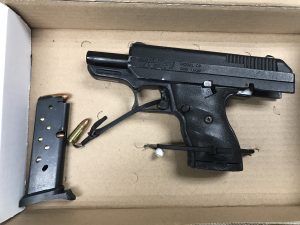 This past week the Maryland House Speaker indicated that lawmakers will pass legislation to put marijuana legalization on the ballot in 2022. We have known for quite some time that legalization is coming, but this unequivocal statement from a top state lawmaker all but makes it official that Maryland voters will decide whether marijuana becomes legal in November of 2022. The Speaker announced the formation of a workgroup consisting of ten other state lawmakers, who will hammer out various legalization issues such as taxation, expansion of drug treatment programs and of course the licensing and regulatory aspects of cannabis production and sales. The group will also tackle criminal law issues such as initiating the dismissal of all open marijuana cases and expanding expungement to include past marijuana convictions. Lawmakers must also consider the impact of legalization on the state’s traffic laws and a police officer’s authorization to perform an automobile search based on the suspected presence of marijuana. It may not be a crime to possess small amounts of cannabis, but that doesn’t mean it’s legal. The suspected presence of contraband such as marijuana currently gives police the legal authority to search a vehicle, though this would undoubtedly change the minute pot becomes legal.
This past week the Maryland House Speaker indicated that lawmakers will pass legislation to put marijuana legalization on the ballot in 2022. We have known for quite some time that legalization is coming, but this unequivocal statement from a top state lawmaker all but makes it official that Maryland voters will decide whether marijuana becomes legal in November of 2022. The Speaker announced the formation of a workgroup consisting of ten other state lawmakers, who will hammer out various legalization issues such as taxation, expansion of drug treatment programs and of course the licensing and regulatory aspects of cannabis production and sales. The group will also tackle criminal law issues such as initiating the dismissal of all open marijuana cases and expanding expungement to include past marijuana convictions. Lawmakers must also consider the impact of legalization on the state’s traffic laws and a police officer’s authorization to perform an automobile search based on the suspected presence of marijuana. It may not be a crime to possess small amounts of cannabis, but that doesn’t mean it’s legal. The suspected presence of contraband such as marijuana currently gives police the legal authority to search a vehicle, though this would undoubtedly change the minute pot becomes legal.
Anyone serving jail time for marijuana related crimes would also stand to benefit from legalization, though it is unclear how this would affect those serving time for marijuana distribution or possession with intent to distribute. Possession with intent to distribute marijuana a common offense, and it is still classified as a felony in Maryland regardless of the amount at issue. Many police officers will wrongly arrest a suspect for possession with intent to distribute based on nothing more than packaging and the presence of money or a scale. Lawmakers must find a way to address possession with intent to distribute assuming cannabis will be a legal substance within the next 15 months. As regular readers are aware, misdemeanor marijuana possession cases that end with the imposition of a jail sentence are becoming more infrequent. In addition, many possession cases end up being dismissed due to the difficulty in satisfying the chemical testing requirements in Maryland. The presence of THC alone is not sufficient to establish that a substance is in fact cannabis. Hemp is a legal substance in Maryland, and has officially been codified as having an acceptable THC level of .3 percent or less. Therefore, the presence of THC alone is not enough to distinguish between legal hemp and illegal cannabis. State prosecutors have essentially been forced to outsource their cannabis testing to private labs, sometimes in other states, or decline to prosecute. The MSP lab has not regularly been testing the THC percentages of suspected cannabis for quite some time.
Both Virginia and Washington D.C. have officially legalized marijuana for recreational use, and adults can grow their own pot without fear of arrest and prosecution. Recreational marijuana will not be sold in Virginia until 2024, and therefore it is still a crime to sell or possess with intent to sell. The Virginia law become effective on July 1 of this year, and now Maryland finds itself behind the curve in the region as it waits to join 18 other states that have legalized marijuana. The Blog will continue to follow this important issue as we have for the past 8 years since medical cannabis was signed into law. We will post a follow up article as more information comes out of Annapolis, and we fully expect marijuana to once again be the hottest topic in the next legislative session. If you have been arrested or charged with any offense in Maryland or Florida contact criminal defense lawyer Benjamin Herbst for a free consultation anytime at 410-207-2598. Benjamin has extensive experience defending drug cases such as possession with intent to distribute (PWID) and other CDS charges such as delivery and possession of cocaine, heroin and prescription pills. He also specializes in probation violations and juvenile criminal cases for all types of charges including assault and battery, firearm possession and theft. Contact Benjamin today to learn what defenses may be available in your case.
 Criminal Defense Lawyer Blog
Criminal Defense Lawyer Blog










